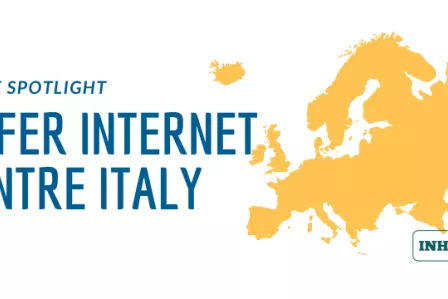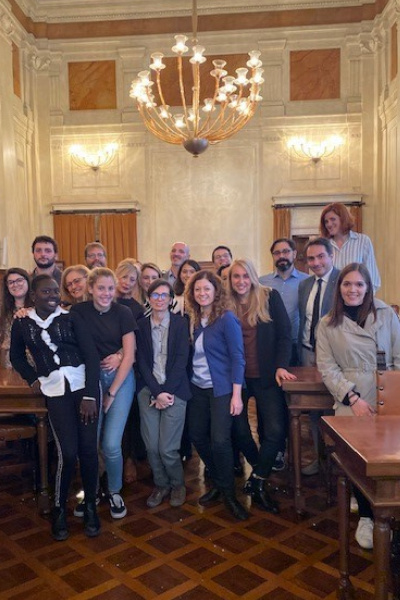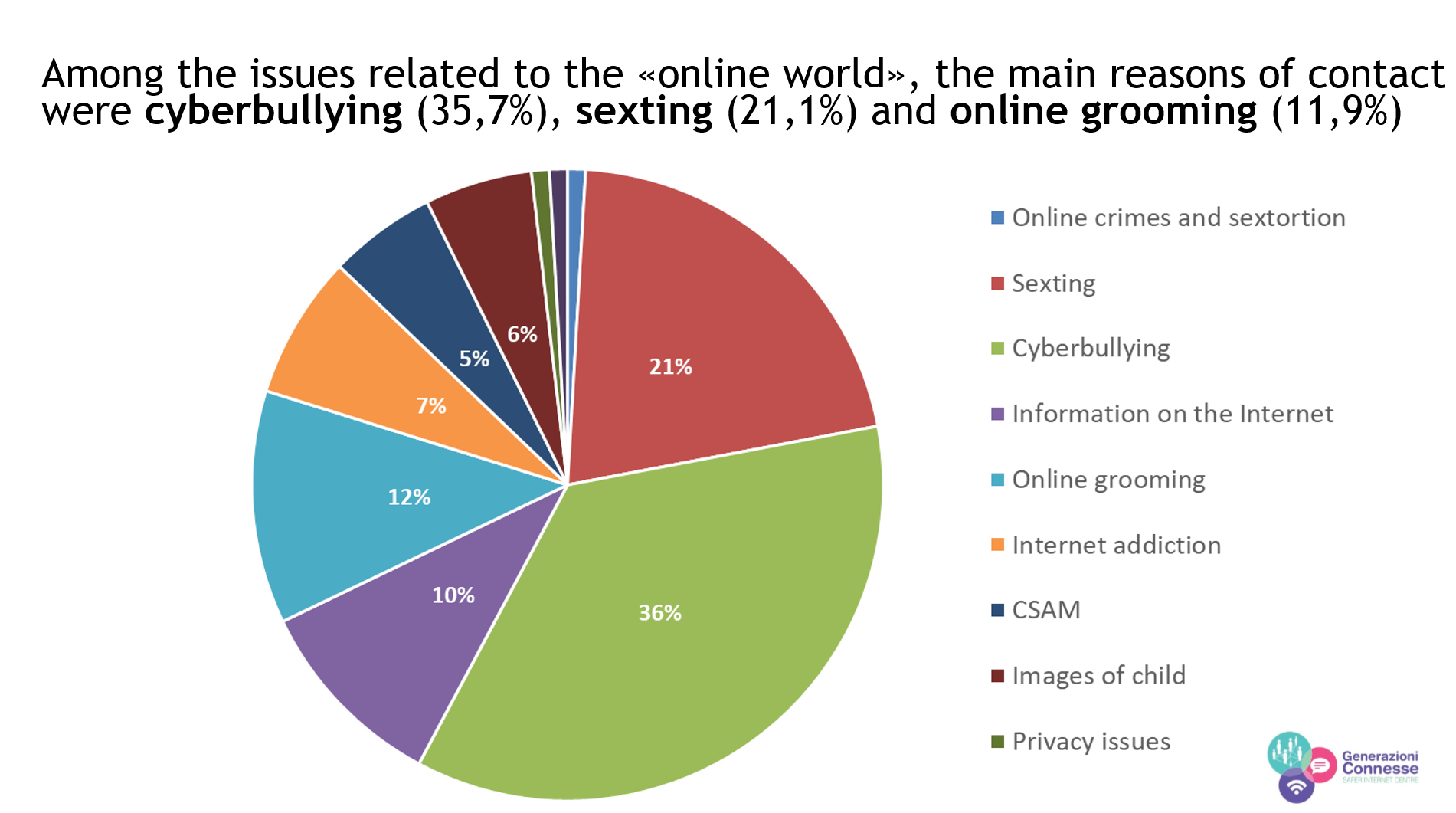As part of the Better Internet for Kids (BIK) Quality Assurance Programme (QAP), the Insafe-INHOPE Coordination Teams are jointly conducting a set of ten country visits to the national Safer Internet Centres (SICs) to better understand what is happening in the Member States: monitoring emerging issues and challenges, identifying good practices to be shared, and harvesting the results of the Better Internet for Kids (BIK) policy. From 29-30 October 2019, the Safer Internet Centre Italy was visited, bringing together a group of diverse stakeholders and SIC consortium partners at the Ministry of Education, University of Research in Rome.

The national visit kicked-off with a stakeholder roundtable which aimed to hear from national stakeholders and strategic partners about their current activities and collaboration with the national SIC. For Safer Internet Centre Italy, three Advisory Board members were present:
- AGIA: an Italian Independent Authority for Children and Adolescents which is a member of the European Network of Ombudspersons for Children (ENOC). AGIA is also a member of the SIC consortium.
- Ludoteca del Registro.it: a digital education project created in 2011 for primary school students, between the ages of 6 and 10 years old. To date, 150 primary schools and 400 classes have been involved in the activities throughout the country. Ludoteca offers activities/resources (e.g. games, peer education) for high school students with 20 high schools and 600 students currently involved.
- Representatives of Hewlett Packard Enterprise (HPE) presented the initiative Safe2Web, which was designed by HPE in 2014. To date, 60 HPE volunteers have joined this programme, including around 6,000 students and 1,000 parents being involved in the workshops.

Following the stakeholder roundtable, the Italian SIC (branded as Generazioni Connesse) provided an extensive update about current activities and priorities, highlighting the main SIC website – www.generazioniconnesse.it – which provides informative resources and links to the various activity lines of awareness centre, youth participation, helpline and hotline.
Moreover, Generazioni Connesse supports schools in the adoption of an e-Safety policy; an empowering tool to address the challenges posed by the digital environment. The e-Safety policy is a planning document produced by schools with the support of online resources and services developed to guide them through the process. Since October 2019, 1,049 schools and 958 teachers from across the country have requested access to the e-Safety policy tool.
In terms of youth participation, the Italian SIC works together with two dynamic youth organisations, Agenzia DIRE, an online newspaper made directly by students and Skuola.net, a student platform with the highest brand awareness in Italy. Together with these two organisations, the SIC organises various activities throughout the year including events, workshop and video chats.
Telefono Azzuro operates the Italian helpline for children, adolescents (up to 18 years old) and adults (mainly parents and teachers). The service is active 24/7 and deals with generic issues, including online issues. The main channels for contact are telephone, email and social media (Facebook and Instagram). Statistics from January to June 2019 outline 104 online issues (main or secondary category) out of a total of 3,759 cases. 83.7 per cent came from calls, 11.2 per cent from chats and 4.1 per cent were sent by email or through the website. Moreover, one in four helpline cases are mental-health related.

Online issues (1 January – 30 June 2019)
In addition, the Italian SIC is composed of two hotlines: "Clicca e Segnala" ("Click and Report") run by Telefono Azzuro and "Stop-it" run by Save the Children Italy. Both are members of INHOPE.
- Clicca e Segnala operated by Telefono Azzurro: Users can report the presence of illegal or harmful content 24/7 via an online form. Soon this will be possible via an app also.
- Stop-it, operated by Save the Children Italy: This service allows users to report the presence of child sexual abuse material 24/7 via an online form. The reports collected by Stop-it are sent to the National Centre for the Fight against Online Child Pornography (CNCPO), set up at the Postal and Communications Police, respecting the privacy of the user and in compliance with the national law and the procedure agreed with the Police. From January to September 2019, a total of 845 reports were received through the Stop-it service.
The main activities of the hotline operators include data collection of received reports (categorised by users), forwarding received reports to the Central Centre for Combating Child Pornography (CNCPO) ensuring anonymity, and identifying presumed hosting countries through www.centralops.net/co/.
Further information about the Safer Internet Centre Italy can be found on the SIC country profile page and the national SIC website.
As part of the Better Internet for Kids (BIK) Quality Assurance Programme (QAP), the Insafe-INHOPE Coordination Teams are jointly conducting a set of ten country visits to the national Safer Internet Centres (SICs) to better understand what is happening in the Member States: monitoring emerging issues and challenges, identifying good practices to be shared, and harvesting the results of the Better Internet for Kids (BIK) policy. From 29-30 October 2019, the Safer Internet Centre Italy was visited, bringing together a group of diverse stakeholders and SIC consortium partners at the Ministry of Education, University of Research in Rome.

The national visit kicked-off with a stakeholder roundtable which aimed to hear from national stakeholders and strategic partners about their current activities and collaboration with the national SIC. For Safer Internet Centre Italy, three Advisory Board members were present:
- AGIA: an Italian Independent Authority for Children and Adolescents which is a member of the European Network of Ombudspersons for Children (ENOC). AGIA is also a member of the SIC consortium.
- Ludoteca del Registro.it: a digital education project created in 2011 for primary school students, between the ages of 6 and 10 years old. To date, 150 primary schools and 400 classes have been involved in the activities throughout the country. Ludoteca offers activities/resources (e.g. games, peer education) for high school students with 20 high schools and 600 students currently involved.
- Representatives of Hewlett Packard Enterprise (HPE) presented the initiative Safe2Web, which was designed by HPE in 2014. To date, 60 HPE volunteers have joined this programme, including around 6,000 students and 1,000 parents being involved in the workshops.

Following the stakeholder roundtable, the Italian SIC (branded as Generazioni Connesse) provided an extensive update about current activities and priorities, highlighting the main SIC website – www.generazioniconnesse.it – which provides informative resources and links to the various activity lines of awareness centre, youth participation, helpline and hotline.
Moreover, Generazioni Connesse supports schools in the adoption of an e-Safety policy; an empowering tool to address the challenges posed by the digital environment. The e-Safety policy is a planning document produced by schools with the support of online resources and services developed to guide them through the process. Since October 2019, 1,049 schools and 958 teachers from across the country have requested access to the e-Safety policy tool.
In terms of youth participation, the Italian SIC works together with two dynamic youth organisations, Agenzia DIRE, an online newspaper made directly by students and Skuola.net, a student platform with the highest brand awareness in Italy. Together with these two organisations, the SIC organises various activities throughout the year including events, workshop and video chats.
Telefono Azzuro operates the Italian helpline for children, adolescents (up to 18 years old) and adults (mainly parents and teachers). The service is active 24/7 and deals with generic issues, including online issues. The main channels for contact are telephone, email and social media (Facebook and Instagram). Statistics from January to June 2019 outline 104 online issues (main or secondary category) out of a total of 3,759 cases. 83.7 per cent came from calls, 11.2 per cent from chats and 4.1 per cent were sent by email or through the website. Moreover, one in four helpline cases are mental-health related.

Online issues (1 January – 30 June 2019)
In addition, the Italian SIC is composed of two hotlines: "Clicca e Segnala" ("Click and Report") run by Telefono Azzuro and "Stop-it" run by Save the Children Italy. Both are members of INHOPE.
- Clicca e Segnala operated by Telefono Azzurro: Users can report the presence of illegal or harmful content 24/7 via an online form. Soon this will be possible via an app also.
- Stop-it, operated by Save the Children Italy: This service allows users to report the presence of child sexual abuse material 24/7 via an online form. The reports collected by Stop-it are sent to the National Centre for the Fight against Online Child Pornography (CNCPO), set up at the Postal and Communications Police, respecting the privacy of the user and in compliance with the national law and the procedure agreed with the Police. From January to September 2019, a total of 845 reports were received through the Stop-it service.
The main activities of the hotline operators include data collection of received reports (categorised by users), forwarding received reports to the Central Centre for Combating Child Pornography (CNCPO) ensuring anonymity, and identifying presumed hosting countries through www.centralops.net/co/.
Further information about the Safer Internet Centre Italy can be found on the SIC country profile page and the national SIC website.
- Safer Internet Centre (SIC) Insafe INHOPE
Related content
- < Previous article
- Next article >












